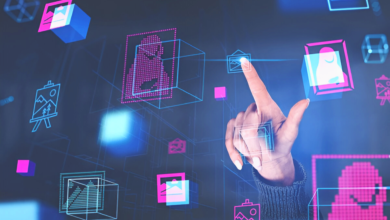NFT Art: A Beginner’s Guide (2024)

In the past few years, Non-Fungible Tokens (NFTs) have become popular in the art world. These tokens are changing how we see and own digital art. These one-of-a-kind digital assets have become very famous and controversial, which has led to questions about what they are, how they are made, their pros and cons, and what the future holds for them.
What are NFTs?
To understand NFT art, it’s crucial to grasp the concept of NFTs themselves. NFTs are blockchain-based tokens that represent ownership of a unique digital item or asset. Unlike cryptocurrencies such as Bitcoin or Ethereum, which are fungible and interchangeable, NFTs are non-fungible, meaning each token is distinct and cannot be replicated.
How NFTs are used in art
NFTs have found significant applications in the art world, where they are used to authenticate and trade digital artworks. By minting an artwork as an NFT, artists can prove ownership and scarcity, allowing collectors to purchase and own digital art in a way that was previously challenging to establish.
Understanding NFT Art
Definition of NFT Art
NFT art refers to digital artworks that are tokenized as NFTs. These artworks can include anything from digital paintings and animations to virtual reality experiences. What sets NFT art apart is its tokenized nature, providing verifiable proof of ownership and uniqueness.
How NFT art is created
Creating NFT art involves minting a digital artwork as an NFT on a blockchain platform like Ethereum. This process typically requires the artist to pay a fee and follow specific guidelines set by the platform. Once minted, the NFT can be bought, sold, or traded in online marketplaces specializing in digital art.
Advantages of NFT Art
Accessibility and ownership
One of the key advantages of NFT art is its accessibility to a global audience. Unlike physical art, which may be limited by geographical barriers, NFT art can be easily shared and owned by anyone with an internet connection. This democratization of art ownership has opened new avenues for artists and collectors alike.
Potential for artists
NFT art presents exciting opportunities for artists to monetize their digital creations directly. By selling their art as NFTs, artists can bypass traditional intermediaries like galleries and reach a global market of collectors. This direct connection can lead to increased revenue and recognition for artists exploring digital mediums.
Challenges of NFT Art
Environmental concerns
One of the most debated aspects of NFT art is its environmental impact. The energy-intensive process of minting NFTs on blockchain networks like Ethereum has raised concerns about carbon emissions and sustainability. As the technology evolves, addressing these environmental challenges will be crucial for the long-term viability of NFT art.
Legal and copyright issues
The decentralized nature of blockchain and NFTs has also brought about legal and copyright challenges. Issues such as intellectual property rights, licensing, and plagiarism remain complex in the context of NFT art. Resolving these legal uncertainties is essential for establishing a stable and trustworthy NFT art ecosystem.
Future of NFT Art
Evolution of NFTs in the art world
Looking ahead, NFT art is poised to continue evolving and reshaping the art landscape. Innovations in blockchain technology, such as layer 2 solutions and sustainable protocols, could address current limitations and drive adoption further. The integration of NFTs with augmented reality and virtual reality experiences also holds immense potential for immersive digital art forms.
Impact on traditional art markets
The rise of NFT art has sparked discussions about its impact on traditional art markets. While some see NFTs as complementary to traditional art, offering new avenues for expression and commerce, others raise concerns about potential disruptions and value discrepancies. Balancing innovation with preservation will be crucial in navigating the coexistence of NFT art and traditional art markets.
Conclusion
In conclusion, NFT art represents a transformative shift in how we create, own, and value digital art. Its unique attributes offer opportunities for accessibility, innovation, and empowerment within the art community. However, addressing challenges such as environmental impact and legal frameworks will be essential for a sustainable and inclusive NFT art ecosystem.








